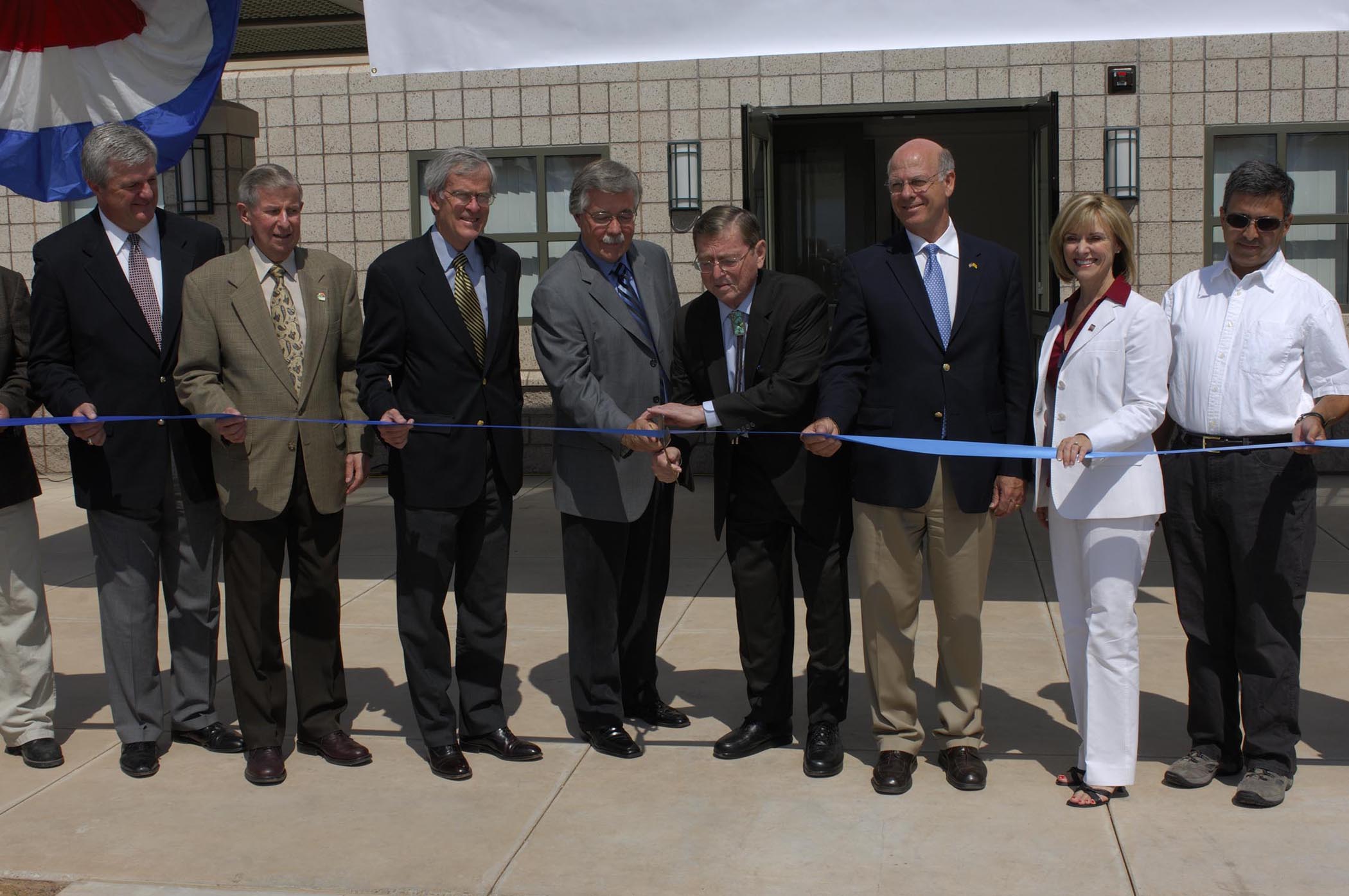- Reclamation
- R&D
- DWPR
- BGNDRF
BGNDRF History

Ribbon Cutting of Brackish Groundwater National Desalination Research Facilty in 2007.The movement to create a desalination research facility to address the need to lower costs of brackish water treatment, to improve performance and to manage the concentrates removed from the water began in 2001 when Congress, through the Desalination Act, directed Reclamation, in cooperation with Sandia National Laboratories, to plan for a desalination research and development facility in the Tularosa Basin of New Mexico. Congress subsequently directed Reclamation to design, build, operate and maintain the facility. The facility is called the Brackish Groundwater National Research and Development Facility (BGNDRF). Construction of the facility began in 2004, followed by a ribbon cutting in August 2007, commissioning in 2008 and research starting in 2009.
The Center provides state-of-the-art research facilities for researchers involved in desalination research studies, pilot-scale projects and small demonstration projects. The facility uniquely focuses on brackish groundwater desalination; renewable energy integration; development of systems for rural and Native American communities; concentrate management; and treating water produced from oil and gas production. It is the only major research facility in the United States dedicated solely to the desalination of brackish and impaired groundwaters and is located within an almost ideal environment for desalination research, the Tularosa Basin, which possesses a vast supply of groundwater resources and a range of water qualities.
The Expeditionary Unit Water Purifier, jointly developed by the Office of Naval Research, the Army, the Navy, and Reclamation was the first research project. During shakedown testing in 2005, the EUWP was sent to Biloxi, MS following hurricane Katrina to provide water for the regional hospital. This unit has been used in several projects since. Two pilot plant projects are currently being tested. General Electric is partnered with New Mexico State University (NMSU) using Office of Naval Research funding to study electrodialysis reversal and pulsed electrodialysis for small communities. Veolia Water Solutions and Technologies is partnered with the Center for Inland Desalination Systems at the University of Texas at El Paso and Reclamation on a project that originated with a grant from Reclamation followed by funding from Sandia National Laboratories. The project uses electrodialysis metathesis to increase the amount of water recovered from brackish sources. A number of inquires have been received about testing concepts at the facility, such as treating salt tolerant turfs with concentrate water in the agricultural part of the facility and enhanced evaporation technology using the facility’s evaporation ponds.
An important part of managing the BGNDRF is setting research priorities through expert workshops, conferences, and targeted research funding:
- May 2010, the “Concentrate Management Workshop: Summary of Research Needs”, was held.
- December 13-14, 2011, New Water New Energy: A Conference Linking Desalination and Renewable Energy Sgt. Willie Estrada Memorial Civic Center, Alamogordo, New Mexico: Join us for a day-and-a-half conference that aims to identify U.S. research needs concerning inland, small-scale, low-cost rural brackish desalination water projects using renewable energy such as solar, wind, geothermal, and waste heat sources.
Reclamation has initiated discussions with a number of organizations concerning the creation of a Brackish Desalination Innovation Cluster focused around the Tularosa Basin. The cluster will be a group of organizations linked by common needs to apply innovative solutions to increase water supplies through treatment of brackish groundwater. The cluster concept will speed the development of synergies needed for a sustained effort.

